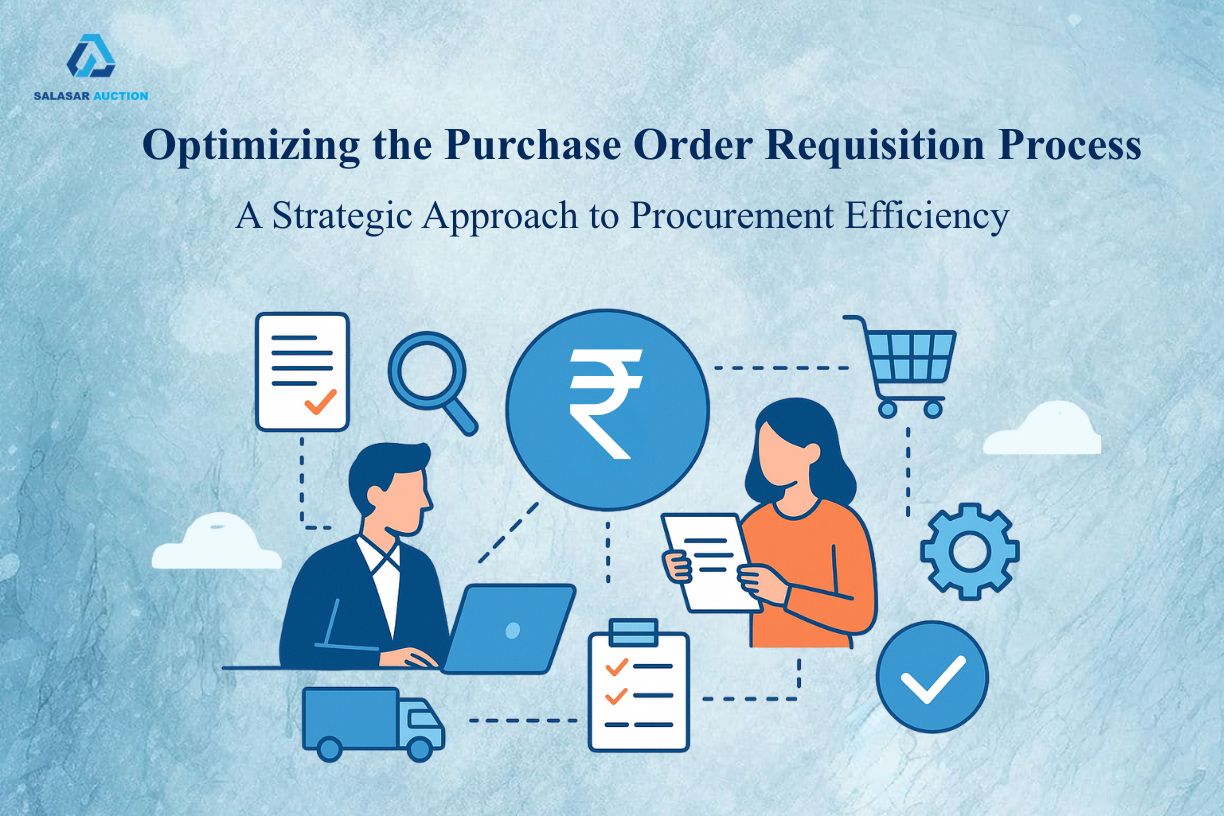The Procure to Pay (P2P) process also known as the purchase order requisition process is a critical element of modern procurement management. For organizations aiming to improve cost control, enhance visibility, and strengthen supplier relationships, optimizing this process through automation and e-procurement solutions is no longer optional, it is essential.
Understanding the Purchase Order Requisition Process
The purchase order requisition process forms the foundation of the Procure to pay cycle. It begins with a formal purchase requisition, a document or digital request created by departments or purchasing heads to procure required goods or services. This process ensures that procurement activities align with budgetary and operational goals.
A standard P2P process typically involves the following stages:
Purchase Requisition Creation:
Initiating a purchase request order that outlines specific items, quantities, and justifications.Approval Workflow:
Routing the purchase requisition document through the proper authorization hierarchy for approval.Vendor Selection:
Identifying and engaging qualified suppliers using an integrated e-procurement platform.Request for Quotation (RFQ) / Proposal (RFP):
Issuing RFQs or RFPs to multiple suppliers to obtain competitive pricing and terms before finalizing the vendor.Quotation Evaluation & Negotiation:
Comparing supplier quotes, conducting negotiations on pricing, payment terms, delivery schedules, and other contractual conditions.Purchase Order Generation:
Creating and sending the purchase order (PO) through an automated purchase order system.Goods Receipt:
Receiving, verifying, and recording goods or services.Invoice Matching:
Reconciling invoices with purchase orders and delivery records.Payment Processing:
Completing the Procure to pay transaction by issuing timely payments to suppliers.
Each of these steps plays a crucial role in ensuring transparency and accountability across the P2P process cycle.
The Case for Automation in Purchase Requisition and Order Management
Manual Procure to pay processes often result in delays, data inconsistencies, and compliance risks. Implementing an automated purchase order system or purchase requisition system can eliminate these challenges.
Key advantages of automation include:
Faster Processing:
Automated workflows reduce approval time and eliminate redundant steps in the purchase requisition process.Error Reduction:
A purchase order automation software ensures accurate data capture and consistent routing, minimizing human error.Improved Compliance:
Predefined workflows and digital audit trails ensure adherence to internal procurement policies.Greater Visibility:
Real-time dashboards within an e-procurement system offer insights into spend analytics, order status, and supplier performance.
Automation transforms traditional procurement into a data-driven, agile process essential for organizations looking to stay competitive.
Key Components of an E-Procurement Solution
A well-designed e-procurement solution or online procurement system brings together multiple components to create a unified Procure to pay software ecosystem:
Supplier Management:
Centralizes supplier data, pricing, and compliance records for efficient sourcing.Source-to-Contract (S2C):
Covers e-sourcing, contract management, and negotiation workflows.Procure to Pay (P2P):
Automates the complete cycle from purchase requisition to payment.Spend Analytics:
Uses data from the e-procurement platform to identify cost-saving opportunities.
By integrating these components, businesses can achieve end-to-end procurement visibility and control.
Steps to Automate the Purchase to Pay (P2P) Process
Implementing an automated purchase order and requisition system requires a structured approach. The following steps help ensure a smooth transition:
Assess Current Procurement Workflow:
Identify pain points in your existing requisition process and approval cycle.Select the Right E-Procurement Platform:
Evaluate e-procurement systems based on scalability, integration capabilities, and user experience.Define Approval Hierarchies:
Establish clear approval workflows for purchase requisition and purchase order creation.Integrate with ERP and Finance Systems:
Ensure seamless data flow between your P2P purchasing platform and existing enterprise tools.Train Procurement Teams:
Familiarize stakeholders with new tools and approval processes.Monitor and Optimize:
Use analytics to continuously refine your Procure to pay process and ensure consistent performance.
The Strategic Value of Purchase to Pay Automation
Optimizing the purchase order requisition process through digital transformation is not just an operational upgrade it’s a strategic advantage. Implementing purchase to pay automation enables organizations to:
Reduce procurement cycle times
Improve budget control and compliance
Strengthen supplier relationships
Gain real-time visibility into spend patterns
Enterprises adopting modern e-procurement solutions or e procure platforms are better equipped to handle dynamic supply chains and evolving business demands.
Conclusion
The Procure to pay (P2P) process is at the heart of efficient procurement management. By automating the purchase order requisition process with advanced e-procurement systems, organizations can transform procurement into a value-driven function.
Whether you are a growing business or an established enterprise, implementing the right Procure to pay software will simplify your requisition process, improve compliance, and drive cost efficiency. Investing in automation is not just about digital convenience, it's about building a smarter, more accountable procurement ecosystem.

